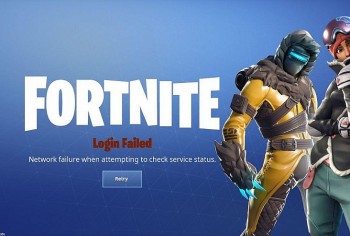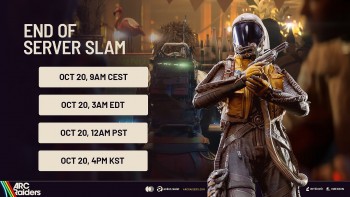Is Pain A Disease or A Symptom of Disease?
 |
| Pain as a symptom or a disease |
| Table of Content |
What is A Pain or Chronic Pain ?
Pain is an unpleasant sensation that occurs at the same time as tissue damage, the level of pain depends on the subjective perception of each person, is a sign of disease that needs to be found for a cause for treatment.
Chronic pain is pain that recurs many times and lasts for more than 3 months. Chronic pain can start with an acute pain and last longer than expected, often due to many factors.
Patients with chronic pain can lead to psychological disorders such as anxiety, depression, mood changes that affect social functioning.
Chronic pain is a major source of suffering. It interferes with daily functioning and often is accompanied by distress. Chronic pain is defined as pain that persists or recurs for more than 3 months. In chronic pain syndromes, pain can be the sole or a leading complaint and requires special treatment and care. In conditions such as fibromyalgia or nonspecific low-back pain, chronic pain may be conceived as a disease in its own right.
Pain is one of the most frequent causes for patients to seek medical care.
Although mortality rates are highest for cardiac infarction and stroke, infectious diseases, cancers, and diabetes, chronic pain is a leading source of human suffering and disability.
Pain itself and many diseases associated with chronic pain are not immediately life threatening; people continue to live
Pain as A Disease
The “gateway” hypothesis- Mechanisms of pain conduction and pain regulation Gate of control is an important concept in pain assessment and control. Pain signals are transmitted all the way through a coordination system: In the spinal cord, there is a very important filtering system, also known as the "gate". It was described under the name "gate control hypothesis" by Patrick Wall and Ronald Melzack in 1965. Pain signals are transmitted through this gate. Depending on the port is expanded more or less, the information capacity can be increased or decreased, even completely cut off. The more open the gate, the stronger the pain signal is perceived. When the door is completely closed, the pain will no longer be felt.
This hypothesis allows understanding the effects of certain responses on pain sensation. For example, putting cold water on the burned area can effectively relieve pain because it triggers the closure of the portal, reducing pain information going to the brain, resulting in less pain being felt. The body's own release of endogenous narcotic analgesics to combat pain also follows the mechanism of action on the closure of this gate.
The portal hypothesis is important in the treatment of pain. To relieve pain, we can act on the gate so that the door is partially or completely closed. This hypothesis also allows to explain the sensation of pain that occurs when there is an imbalance between the pain stimulus system (the gate is easily opened, or is opened excessively) and the pain inhibitory system (weakened). gate-closing trigger system).
So it can be said that part of a pain doctor's job is to find a way to "close the gate", find out what's wrong with "opening the gate" and when "closing the gate" to help the patient quickly wave goodbye separate from pain.
Chronic pain affects 20% of the world's population. Chronic pain causes depression, anxiety, impaired life activities, increased tolerance; suffering while increasing the economic burden on the family and society. So, in May 2019, the International Classification of Diseases introduced a new version of the classification, ICD-11, where chronic pain is considered a health problem, which is a disease. Pain that lasts more than 3 months is called chronic pain. Patients with chronic pain have the right to pain treatment. People with chronic pain need access to primary care treatment like any other illness.
Pain is often a sign that people seek medical attention, even hospitalization. Sometimes, pain is a disease such as: pain after shingles, phantom limb pain, chronic pelvic pain, chronic pain after surgery.... Patients have to live with chronic, difficult-to-treat pain that affects quality of life. bad life. So, whether you or a loved one is experiencing pain, even if it is just a symptom that is difficult to treat with failed medication, or is already a disease, do not hesitate to contact hospital.
Depending on the nature, extent and stage of the disease in an overall picture for each patient, pain specialists will advise, explain and find the optimal solution with the help of ultrasound machines. The most modern neuroacoustics, the best drugs, the latest pain management intervention techniques and treatment guidelines are always up-to-date with today's world.
Pain as a Symptom of Disease
How does the body perceive pain?
A local injury, such as a burn to the hand, stimulates pain receptors. The beginning is the end of the nerve fibers sensitive to pain signals that can be found in all types of tissues: skin, muscles, and internal organs. From the site of local injury, pain signals will be transmitted through peripheral conduction systems to bring pain information to the brain. This system consists of nerve fibers of different sizes and is capable of transmitting different types of signals at different speeds:
The larger the size of a nerve fiber, the faster it transmits information, usually is the type of information about the presence of local pain. The thinner the nerve fiber, the slower the conduction rate, usually the type of information related to diffuse pain. Pain signals are transmitted from the periphery to the spinal cord (located in the spine). From the spinal cord, information is transmitted to the brain. Different structures in the brain are involved, working together to decipher the location and nature of pain. This then triggers different reflexes in response to pain information it receives: for example, retracting the hand to avoid the source of the burn. Pain is a protective reflex of the body. Certain regions of the brain specialize in storing sensations and making comparisons with past experiences (known as learning). For example, feel and compare the pain sensation when being burned by different agents: fire burns, oil burns or hot water burns. Others are more emotionally specialized in pain and shape how the body responds to pain.
The body can protect itself to relieve pain Endogenous narcotic analgesics:
Pain is a warning sign in favor of physical integrity but pain is also an unpleasant sensation to the body. Therefore, the body also finds a way to combat this unpleasant feeling. Since 1975, it has been known that the body can excrete pain-fighting substances. Those are endogenous Morphines (endophine, endomorphine) that inhibit pain sensation to protect the body against pain-causing damage. This is also the foundation for the development of exogenous narcotic pain relievers, also known as synthetic narcotic analgesics.
 Top 10 Healthiest Countries in The World Top 10 Healthiest Countries in The World Do you know what country is the healthiest in the world? How do they rank ‘healthy’ level? Read on the article! |
 How to Relieve 'painful constipation' for Babies in Seconds - Video How to Relieve 'painful constipation' for Babies in Seconds - Video A Woman, who is a certified infant massage instructor, shares how to relieve babies of painful constipation in seconds. |























